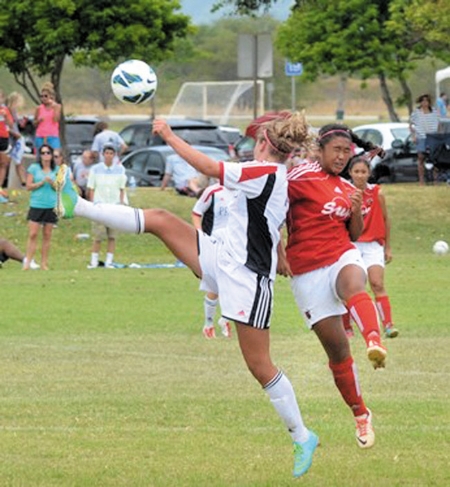Waipio Complex Fulfills Expectations
Soccer is indeed the sport of nations. Brazil’s recent victory over Spain in the Confederations Cup drew staggering worldwide interest and served as a preview of what to expect in 2014 when the World Cup is staged in venues throughout Brazil. There will be an unbelievable amount of attention and interest in what will happen during this time in South America. I know that everywhere I have traveled in the last few years – from the townships of South Africa to the islands of Micronesia – soccer, or football as it is called in most countries, is the sport of choice for men and women.
Hawaii is not impervious to soccer’s popularity. In our Islands, more than 30,000 players of all ages and gender participate in this game that, as currently played, originated in England. And just recently, the City and County of Honolulu’s Waipio Soccer Complex played host to the U.S. Youth Soccer Far West Regional Championships. This prestigious event drew more than 4,000 players and coaches and approximately 10,000 spectators, and provided an economic boost to Honolulu estimated in the $8 million to $10 million range.
The tournament attracted more than 200 boys and girls teams, ages 12 to 19, from Alaska, Arizona, California, Colorado, Idaho, Montana, Nevada, New Mexico, Oregon, Utah, Washington and Wyoming. Hawaii was well-represented with several teams from the Honolulu Bulls, Hawaii Rush, Surf Hawaii, Abunai, Leahi, Maui United and Riggers soccer clubs.
Players, coaches, their families and volunteers stayed in our hotels, rented cars and vans, ate in our restaurants, shopped in our stores, trained in our parks and enjoyed our beautiful city. In other words, all the things that we love about sports tourism that the Pro Bowl, Honolulu Marathon and Sony Open do for us on a grander scale kicked into action.
The bonus for us is our own Leahi 95 Premier team, coached by Scott Keopuhiwa, won the U18 Girls championship and is now bound for Kansas to compete for the national title. It proves again that 808 athletes can compete with the best.
Frank Doyle, a member of the Waipio Soccer Complex steering committee, recalls, “For many years, soccer enthusiasts dreamed of having a first-class facility that would attract teams from all over the country to play here and contribute to our economy. It feels great to know that Waipio has become an asset to our city.”
The very first time Honolulu hosted the Far West regionals was in 2003 when Jeremy Harris, who was a driving force behind the soccer complex, was mayor. At the time, Waipio had been open only a few years and the buzz was that the complex featured some of the finest soccer fields in the western United States. Thus, there was great interest in returning to Oahu, and that is exactly what happened in 2008 when I was at the helm of the city.
As a member of the Honolulu City Council in the late ’90s, I recall that my colleagues and I supported the agreement between the city and the U.S. Navy, which paved the way for the development of the $12.5 million soccer complex at Waipio. The case was made that it was important, especially for our young soccer players, to have the kind of fields that would help them to excel in a sport that was growing by leaps and bounds in popularity here and globally. Our only concern was with respect to the ongoing commitment that the city had to make to maintain and upkeep a new facility. It’s no secret that it is a challenge for city crews to maintain and repair existing fields with oftentimes a spartan staff and limited funding. The last thing that anyone wanted to experience was a complex of this magnitude falling short of expectations.
Time had indeed taken a bit of a toll on the fields at Waipio. Over the years it had hosted a plethora of soccer tournaments at every level, and the wear and tear were really starting to show. In many ways, the recent Far West competition served as a much-needed catalyst to get the fields in better shape and suitable for play. Fortunately, our Parks and Recreation staff, headed by District 5 manager Glenn Kajiwara, was able to step up big time to accomplish this task in time for the tournament, and they deserve kudos for getting the job done. But it shouldn’t have to be this way.
The lesson here is that city officials have to continue to place a priority on providing the funding and committing to a regular schedule of repair and maintenance of our Waipio Complex. Not having the fields in the best possible playing shape works to our detriment. I always have believed that “the longer we delay, the more we have to pay,” when the work ultimately gets done. This is important, not only for our own youth soccer players now and in the future, but also so that we can maintain a solid reputation as a city that has a facility that can host major sporting contests.






